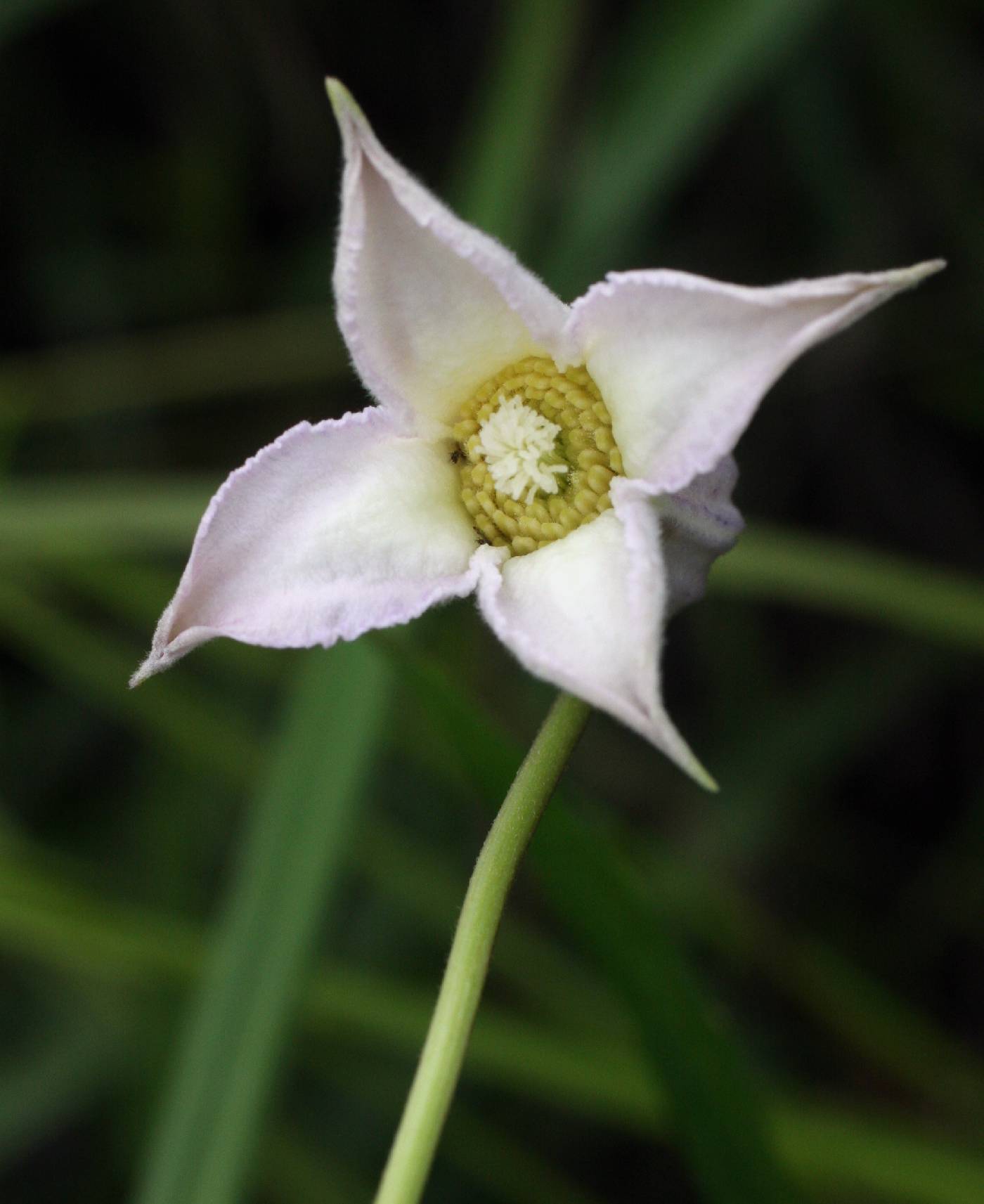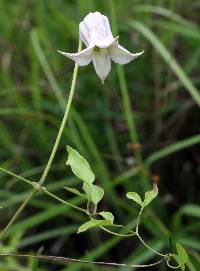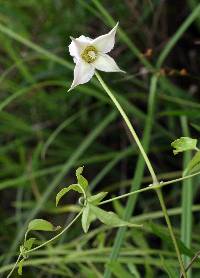|
Family: Ranunculaceae
swamp leather flower
[ Clematis crispa var. walteri (Pursh) A.Gray, moreCoriflora crispa (L.) W.A. Weber, Viorna crispa (L.) Small, Viorna crispa var. walteri (Pursh) Small, Viorna obliqua Small] |
Stems viny, to 3 m, glabrous or sparsely to moderately pilose-pubescent, denser at nodes. Leaf blade 1-2-pinnate or rarely a few simple or 3-foliolate; leaflets 4-10 plus additional ± tendril-like terminal leaflet, usually lanceolate to ovate, occasionally linear, unlobed or proximally 3-5-lobed, (1.5-)3-10 × (0.1-)0.4-4(-5) cm, thin, not conspicuously reticulate; surfaces glabrous, not glaucous. Inflorescences terminal, 1-flowered; bracts absent. Flowers bell-shaped; sepals distally strongly spreading to recurved, violet-blue, lanceolate, 2.5-5 cm, margins proximally thick and tomentose, distally broadly expanded, 2-6 mm wide, thin, crispate, less conspicuously tomentose than proximal portion, or glabrate, tips acuminate, abaxially glabrous. Achenes: bodies appressed-puberulent; beak 2-3.5 cm, appressed-puberulent. 2 n = 16. Flowering spring-summer. Low woods, bottomlands, swamps; 0-200 m; Ala., Ark., Fla., Ga., Ill., Ky., La., Miss., Mo., N.C., Okla., S.C., Tenn., Tex., Va. Clematis crispa is highly variable in leaflet width, and conspicuous variation may occur on a single plant (R.O. Erickson 1943); no discontinuity or geographic correlation exists that would permit the recognition of varieties. The dilated, petaloid sepal tips and thin, crispate, broadly expanded sepal margins are diagnostic for this species. Climber; lvs pinnate; lfls mostly 2-4 pairs, lanceolate to ovate, acuminate, entire or rarely 2-3-lobed, glabrous, the lower lfls on each lf much the larger; cal urceolate; sep 3-4.5 cm, connivent about half-length, the body narrowly lanceolate, dilated above the middle into broad, thin, undulate or crisped margins; mature style 2-3 cm, with numerous ascending hairs rarely over 1.5 mm; 2n=16. Swamps and wet woods on the coastal plain and piedmont; se. Va. to Fla. and Tex., n. in the interior to s. Ill. May-Aug.
Gleason, Henry A. & Cronquist, Arthur J. 1991. Manual of vascular plants of northeastern United States and adjacent Canada. lxxv + 910 pp.
©The New York Botanical Garden. All rights reserved. Used by permission. |





